Designing a Shorter Vertical Leg for Sanitary Steam Traps
Steam traps are part of a steam-in-place system. The current design allots 18 in. of vertical leg for condensate backup. A design with a sensitive bellows has been proven in laboratory tests to need only 6 in. of vertical leg during the 15 min. of 121?C sterilization. Loads of 1 to 27 lb/h are covered by the capability of the new trap, equivalent to required steam for vessels 20 to 40,000 L.
ABSTRACT
Steam traps are part of a steam-in-place system. The current design allots 18 in. of vertical leg for condensate backup. A design with a sensitive bellows has been proven in laboratory tests to need only 6 in. of vertical leg during the 15 min. of 121°C sterilization. Loads of 1 to 27 lb/h are covered by the capability of the new trap, equivalent to required steam for vessels 20 to 40,000 L.
Biopharmaceutical facilities include hundreds of sanitary steam traps. Steam traps require an 18 in. vertical leg for condensate backup during steam-in-place sterilization (SIP). This adds 18 in. to the elevation of equipment, portable vessels, utility panels, and clean room ceilings. The vertical leg is required by the original equipment manufacturer to guarantee that the condensate backup does not reach the temperature instrument that is monitoring a SIP.
Steam traps are sized for the high condensate load during initial heatup of the vessel. However, the condensate load during SIP maintenance is 50 times lower than the heatup load. Jacobs asked if Spence Engineering Co., the manufacturer of Nicholson Steam Trap, could guarantee their steam traps with 6 in. condensate backup at low loads during SIP maintenance. This article reports on laboratory tests proving a modified bellows in a standard steam trap can hold to the 6 in. maximum.

THERMOSTATIC TRAP MECHANICAL FUNDAMENTALS
A diagram of a thermostatic sanitary steam trap for vertical installations is shown in Figure 1. The working element in this trap is an alcohol-filled bellows. When this bellows is in contact with steam, the alcohol expands, which forces the plug into the seat and stops the steam flow. When cooler condensate hits the trap, the alcohol condenses, which contracts the bellows, pulls the plug off of the seat, and allows the condensate to be purged from the trap.
Several additional features make this a sanitary steam trap. The bellows is located above the plug, which allows a small layer of condensate to remain at the bottom of the trap when the trap is hot. This water layer acts as a seal to prevent small leakages of steam. When the SIP cycle is finished, all condensate drains from the trap as the trap cools. The trap is angled so any condensate left in the trap after the SIP cycle will drain freely. The material is 316L stainless steel to minimize any rouging of the system. The internal surface finish is also less than 20 micro-inch roughness average to prevent any particulate adhesion.
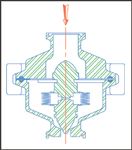
Figure 1. Sanitary Thermostatic Steam Trap
The trap operates on the difference in temperature between the steam and the condensate. This difference is referred to as the sub-cool of the steam trap. As condensate backs up above the trap, its temperature drops. A trap with a high sub-cool requires the condensate to back up a greater height to allow it to cool. The piping immediately above a steam trap is uninsulated so the condensate can cool quickly. Steam traps located in a cramped, hot mechanical space where heat cannot be dissipated will not operate properly. This is a bad facility design and should be avoided.
The range of temperature in SIP is 259 to 280 °F, corresponding to 20 to 35 psig. The trap has a passive way to determine when the condensate is subcooled. Steam pressure squeezes the bellows, which is counteracted by the vapor pressure of the bellow's fill to compensate for the condensate temperature. Proper design of a steam trap can reduce the sub-cool, making it more sensitive to condensate backup. This sensitivity is controlled by the mechanical properties of the bellows and the bellows fill.
STEAM TRAP CAPACITY
A thermostatic steam trap can be likened to a control valve with a condensate capacity (Cv) that varies from full-open to full-closed as the stem travels up and down. Manufacturers publish capacity data based on a 10 °F sub-cool, which is a generally accepted benchmark for comparing traps' maximum capacity. Liquid condensate capacity is defined as in equation [1]:

where q is the flow in gal/min, P1 is the upstream condensate pressure in psia, P2 is the downstream pressure in psia, and G is the specific gravity. Therefore we solve for equation [2].

where W is the flow rate measured in lb/h, 60 is min/h and 8.337 is cold-water (25 °C) density in lb/gal.
There is a limit to P2. As the condensate moves through the trap, its pressure is reduced and the hot condensate flashes. When the downstream pressure is approximately 50% of the upstream pressure, the pressure drop becomes critical. At this point the flashing steam reaches sonic velocity, which chokes off any additional flow through the steam trap. In this case the downstream pressure P2 is the vapor pressure of the flashed condensate.
The test trap discussed in this article is the Nicholson CDS 204 with –B bellows. It has a 5/16 in. orifice (3/4-in. inlet) with a cold water Cv of 1.59. Table 1 indicates the theoretical capacity when passing 80 °C water and the published 10 °F sub-cooled condensate for 20-psig steam. A theoretical capacity at a 2 °F sub-cool is also shown. This calculated capacity is actually larger than the actual capacity because it assumes that the trap is fully open. At a 2 °F sub-cool there is not enough temperature difference to open the trap fully, leaving the trap partially open.
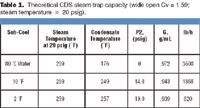
Table 1. Theoretical CDS steam trap capacity (wide open Cv = 1.59; steam temperature = 20 psig).
SIP SYSTEM
SIP systems for vessels and associated piping are highly engineered systems. There are several different arrangements used by the biotech industry to purge air, heat up the vessel, and maintain a steam temperature of 121 °C for a minimum of 15 min.
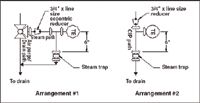
Figure 2. Steam trap piping. Arrangement #1 has a three-way valve. Arrangement #2 for smaller systems has no valve.
Typically, clean steam is introduced to the top of the vessel and exits through feed lines, vent lines, and drain lines. Air, steam, and condensate typically flow through a three-way valve (Arrangement #1, Figure 2) located at the remote end of each pipeline. When the vessel is heated to 95 °C, the air is considered to be sufficiently purged and the three-way valve switches over to the temperature element and steam trap for SIP maintenance. This cycle is shown in Figure 3.

Figure 3. This is a typical SIP temperature curve with a three-way valve. The steam trap is active only during the SIP maintenance period.
For smaller vessels, a three-way valve is not required as shown in Arrangement #2 of Figure 2. In this case the Nicholson model CDS can be used to pass Clean-In-Place Return (CIPR). Capacity calculations show that the CDS can pass 3,608 lb/h (Table 1) of 80 °C water, which exceeds the highest condensate load of 2,500 lb/h listed in Table 2. The requirement to use multiple steam traps or a three-way valve on the bottom of a sterilization tank depends on the time required to purge the air and condensate during the air purge cycle. The 3-way valve allows a faster purging of the condensate, but does not allow pressure buildup if steam is vented.
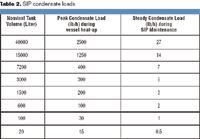
Table 2. SIP condensate loads
Placement of the measuring thermocouple is important to system performance. It must be positioned in the most remote part of the SIP system. For accurate measurement and quick response, immerse the thermocouple or the resistance temperature detector (RTD) directly into the line. The primary disadvantage of the direct immersion sensor is that the system must be shut down to perform routine sensor replacement or calibration. However, a thermowell can be used if this is a concern. A thermowell increases the incidence of measurement error and slows down the response time.
LABORATORY TESTING PROVES 6 IN. LEG SUFFICIENT
Condensate backup tests were conducted for the Nicholson steam trap model CDS –B bellows and for the –A bellows. The –B bellows is a highly sensitive bellows developed to reduce condensate backup for SIP piping systems up to 40 psig. Two different –B bellows were tested for comparison (B1 & B2). The –A bellows is the standard bellows, which can be used at steam pressures up to 100 psig.
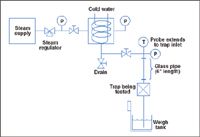
Figure 4. Test arrangement of CDS traps. Steam pressures of 20, 25, 30, and 35 psig were run for five or 10 minutes.
A diagram and photographs in Figures 4, 5, and 6 illustrate the test arrangement. Low-pressure steam flowed from a boiler, through an air-controlled Spence ED regulator, through a heat exchanger, and through a glass pipe to the CDS sanitary steam trap. Cold water flowed through the tubes of the heat exchanger to create condensate in the steam line. A thermocouple placed vertically 2 in. above the steam trap measured the temperature, which was recorded. (The thermocouple orientation for the test is different for a field installation.)

Figure 5. Test apparatus set up
Condensate backup tests were conducted from 20 to 35 psig, which represent the practical minimum and maximum values for SIP pressures. Various condensate loads were generated by changing the cooling water load. Condensate backup was measured in inches above the trap's inlet tri-clamp connection. The weight of condensate for these 5-min tests was recorded by the scale shown at the bottom of Figure 5. The trap cycled many times during this 5-min period.

Figure 6. Close-up view of back-up leg
Temperatures were recorded throughout the test. The difference between the highest temperature measurement and the lowest temperature measurement for a given cycle was designated as the test sub-cool. The test pressure, condensate load, maximum backup, minimum temperature, maximum temperature and sub-cool are shown in Table 3.

Table 3. Test data runs with the CDS trap
TEST RESULTS
Loads indicated in Table 3 are the average flow rate over the five-minute test period. Care was taken in the test set-up to ensure that condensate could not settle in low points in the piping. If this occurred, this puddled condensate was periodically pushed to the trap in slugs. The maximum backup reported in Table 3 includes slugs of condensate. Sanitary steam piping is always sloped to be free draining and steam legs are taken from the top of steam headers to prevent condensate buildup in the lines.
The highest temperatures were recorded when the trap was open and the thermocouple was exposed to live steam. The trap closed when higher levels of condensate reached the bellows. When this occurred, condensate backed up and the temperature dropped.
As expected, condensate backup depends on the condensate load, steam pressure, and steam trap sensitivity. Backup is higher for higher condensate loads. Backup decreases with increasing pressure. This is the result of the sub-cool decreasing with increasing pressure. Backup is lower for the more sensitive Nicholson B bellows. The backup for the B bellows never exceeded 6 in. in all of the tests in the pressure and flow ranges of interest. (Figure 7 summarizes the results of these tests).

Figure 7. An illustration of the data from Table 3
During the five-minute tests the steam trap typically had smaller temperature variations with more cycles at low loads than with high loads. For low, steady condensate loads, the bellows may be "throttling" as the bellows moves slightly to small temperature changes. At other times a slug of condensate reached the trap. When this occurred the condensate quickly backed up and then discharged completely, all within a few seconds, as the trap opened fully. The backup sometimes dropped off with increasing loads as the trap moved from on/off mode to throttling mode.
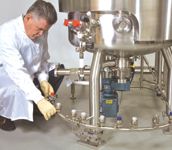
Inspection of critical SIP steam trap subassembly installed on a 500-L bioreactor at Dakota Systems Inc.
It is difficult to calculate a precise sub-cool temperature. Sub-cool is the difference in temperature that causes the bellows to actuate. If the load temporarily exceeds the capacity of the trap, backup occurs. The trap opens, but the temperature continues to drop until the cycle is exhausted. The average sub-cool for the –B2 bellows was 2.3 °F for 20 psig, 1.75 °F for 25 psig, 1.45 °F for 30 psig, and 1.0 °F for 35 psig. The –B bellows has an average sub-cool of 2.0 °F. The maximum sub-cool for the B bellows is 3.4 °F for 20 psig and 1.5 °F for 35 psig. The maximum sub-cool for the –A bellows is 5.3 °F.

An Orifice Trap is Not a Steam Trap
CONCLUSION
The Nicholson Steam Trap Company's model CDS steam trap with a type –B bellows has proven itself in laboratory tests to be sensitive enough to maintain backup below 6 in. for loads ranging from 1 to 27 lb/h, encountered during SIP maintenance of vessels ranging from 20 to 40,000 L.
These laboratory results are encouraging and the next step is to repeat these results in a field setting. Field data will offer a high degree of assurance of the trap's performance, so facilities can be designed around steam traps with a 6 in. backup.
George W. Page, Jr., is director of engineering for Spence Engineering Co., Inc., 150 Coldenham Road, Walden, NY 12586; 845.778.5566, fax: 914.778.1930; gpage@spenceengineering.com
Richard Kral is a lead process engineer at Jacobs, BioPharm Office, Three Tower Bridge, Two Ash Street, Conshohocken, PA 19428, 610.832.2625, fax 610.238.1100, richard.kral@jacobs.com
REFERENCES
1. Fluid Controls Institute. FCI 87-1-2004, Classification and Operating Principles of Steam Traps. Cleveland OH; 2004.
2. Lydersen BK, D'Elia NA, Nelson KL, Oakley T. Bioprocess Engineering: Systems, Equipment, and Facilities. Hoboken NJ: John Wiley & Sons, Inc.; 1994, p. 515.
3. Fluid Controls Institute. Tech Sheet #ST 101. Some Usage Consequences with Orifice Drain Devices (Valuable Design Considerations for Engineers, Designers, and Steam Users). Cleveland OH; 2003 August 20.
